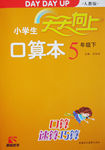题目内容
part in a crowd-scene. Although our "act" would last only for a short time, we could see quite a number
of interesting things.
We all stood at the far end of the studio as workmen prepared the scene, setting up trees at the edge
of a winding path.Very soon, bright lights were turned on and the big movie-camera was
wheeled into position. The director shouted something to the camera operator and then went to speak
to the two famous actors nearby. Since it was hot in the studio, it came as a surprise to us to see one of
the actors put on a heavy overcoat and start walking along the path. A big fan began blowing tiny white
feathers down on him, and soon the trees were covered in "snow". Two more fans were turned on, and a "strong wind" blew through the trees. The picture looked so real that it made us feel cold.
The next scene was a complete contrast(对比).The way it was filmed was quite unusual. Pictures
taken on an island in the Pacific were shown on a glass screen. An actor and actress stood in front of the
scene so that they looked as if they were at the water's edge on an island. By a simple trick like this, palm
trees, sandy beaches, and blue, clear skies had been brought into the studio!
Since it was our turn next, we were left wondering what scene would be prepared for us. For a full
three minutes in our lives we would be experiencing the excitement of being film "Stars"!
B. A film director.
C. A crowd-scene actor
D. A workman for scene setting
B. The man-made scene.
C. The low temperature.
D. The film being shown.
B. More stars would act in the film.
C. The author would leave the studio.
D. The next scene would be prepared.

 天天向上口算本系列答案
天天向上口算本系列答案
| |||||||||||||||||||||||||||||||||||||||||||||





 men
men  ad a baby in the last 9 months should not donate blood.
ad a baby in the last 9 months should not donate blood.